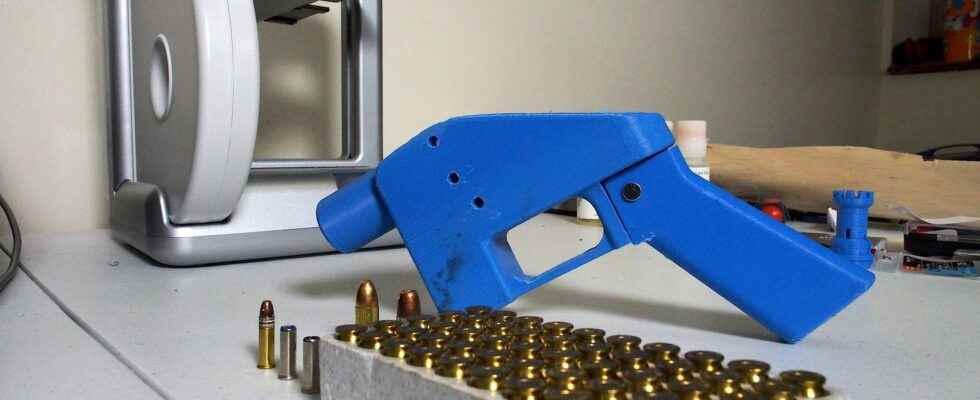Ten years ago, everyone thought 3D printing would take the world by storm. While this technology is making spectacular progress, making it possible to build houses or create hearing aids from cellular tissue, its distribution among individuals remains modest. We must reread the articles prophesying that households would print everything at home, from clothes to food, from raw materials using diagrams available on the Internet. While the products have become relatively affordable (the first models start at $250), usage remains limited.
If you only need to print a few items per year, the easiest solution is to use an online 3D printing service that provides a wide range of materials and professional-grade machinery. Currently, one of the home uses worries: 3D printing is increasingly used in the production of ghost firearms. Police forces around the world are alarmed by the growing risk posed by their proliferation.
A firearm is said to be phantom when it is not manufactured by an approved manufacturer and therefore does not bear an identification number. Ghost guns are a known issue that predates 3D printing. Some managed to import weapons illegally, and amateurs managed to tinker with them from spare parts. From 2016 to 2021, law enforcement recovered more than 45,000 privately-made firearms from potential crime scenes. But 3D printing threatens to give a whole new dimension to this phenomenon. Early versions of 3D printed guns were unreliable single-shot weapons. Now experts consider them credible and viable. They are now automatic weapons, capable of multiple shots.
“Fuck gun control”
And their number is growing. In October, officers from the Metropolitan Police’s Special Crime Command discovered what they believe to be a 3D gun factory in a London home. So far this year, there have been 21 gun recoveries in the UK. Canadian police seized more than 100 of these weapons last year. In the United States, the Baltimore police have just arrested a large producer of firearms and have given some figures on its collection. She had recovered 9 ghost guns in 2019, compared to 477 in 2022. Arrests of criminals holding 3D printed guns are on the rise. Last June, members of a far-right terror group were convicted in Sheffield in the UK after police found such a gun in their home.
3D printed guns do not have a serial number because the printed part of the gun is the receiver. Production plans for these parts are readily available online, and the item can be made using a consumer 3D printer. Other parts of the gun can be purchased at gun stores and online without a gun license. In response, just a fortnight ago, the United States Bureau of Alcohol, Tobacco, Firearms and Explosives (ATF) issued an open letter to gun dealers subjecting the weapon kits to the same provisions as a complete weapon: presence of a serial number and verification of the background of the buyer. The regulator already lost a battle when in 2018 Cody Wilson, the creator of a single-shot gun, the Liberator, won the right to post the gun blueprints online.
Since then, plans have spread, the best known being the FGC-9, a do-it-yourself 3D-printed semi-automatic pistol, made available to the public in March 2020, accompanied by a manual of more than 100 pages and videos describing each step of the manufacturing process. The idea was to be able to create this weapon so as not to use a single piece regulated by European legislation. FGC stands for fuck gun control, the number 9 referring to the caliber 9 mm. This pistol is special, because even the barrel can in theory be produced by hand. The time will come when home printers will make it possible to produce even more sophisticated weapons entirely, if not drones. Hopefully they’ve found other uses by then, otherwise they’ll end up with a serial number.
